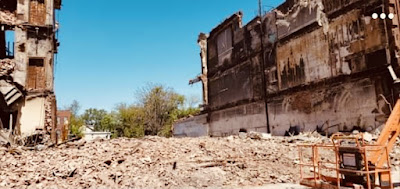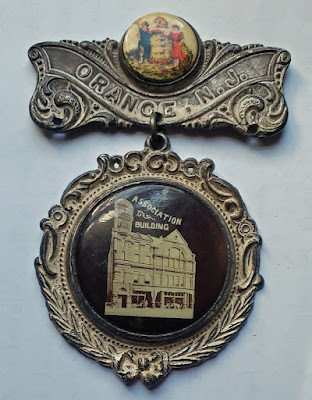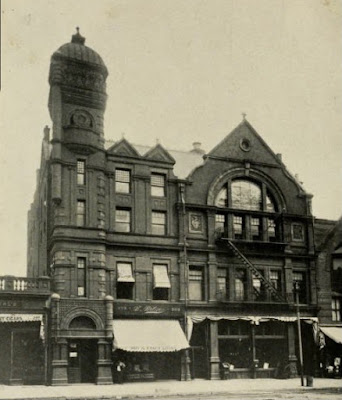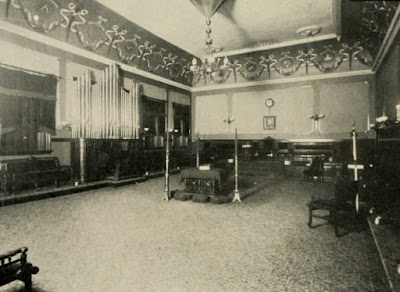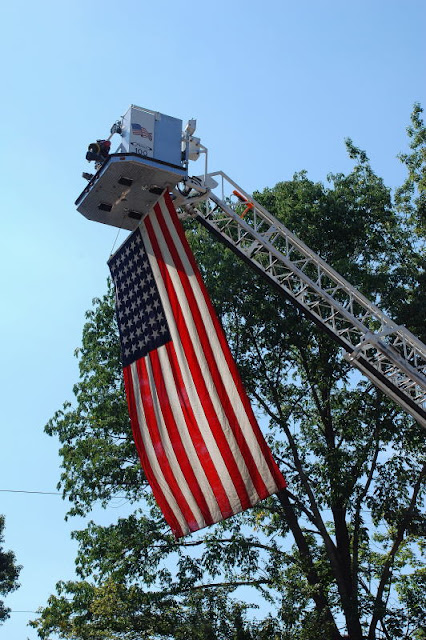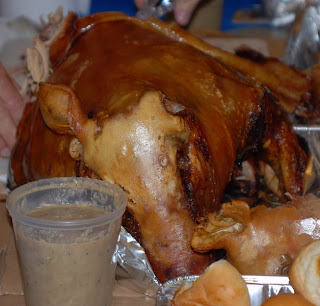 |
| Menorah Lodge 249 75th anniversary pin. |
On this date 100 years ago, my original “mother” lodge was set to labor. This lodge no longer exists, but be that as it may.
Menorah Lodge in Bayonne, New Jersey was formed and began meeting Under Dispensation on Wednesday, January 9, 1924. They were U.D. for only a few months because, on April 16, the Grand Lodge granted a warrant to the brethren. The official record, in the form of a memo to the Grand Lodge, says:
Your Committee on Dispensations and Warrants, to whom was referred the question of granting a warrant to Menorah Lodge, U.D., beg leave to report that the petitioners are all regularly dimitted Masons of Arvada Lodge, No. 141, of the jurisdiction of Colorado; Golden Rule Lodge, No. 159; Fraternity Lodge, No. 262, of the jurisdiction of Michigan; Heroine Lodge, No. 104, of the jurisdiction of Missouri; Oriental Lodge, No. 51; Orient Lodge, No. 126; Bethel Lodge, No. 207, of the jurisdiction of New Jersey; National Lodge, No. 209; Marshall Lodge, No. 848; Mount Sinai Lodge, No. 864; Pilgrim Lodge, No. 890; Elbe Lodge, No. 893; Menorah Lodge, No. 903; Elmer Lodge, No. 909; Paul Revere Lodge, No. 929; Audubon Lodge, No. 930, of the jurisdiction of New York; Jellico Lodge, No. 527, of the jurisdiction of Tennessee, and were set to work by the Most Worshipful Grand Master on the ninth day of January, 1924; that they conferred the Entered Apprentice Degree on fourteen candidates; the Fellow Craft Degree on eight candidates; that seven petitions are awaiting action; that they have secured a safe and suitable lodge-room in which to do Masonic work; that they have secured suitable paraphernalia and have $2,017.96 in the treasury.
Your committee, therefore, recommend that a warrant be granted to Samuel S. Cohen, as Worshipful Master; Maurice Shapiro, as Senior Warden; and Martin I. Marshak, as Junior Warden; and their associates, for a Masonic lodge at Bayonne, Hudson County, to be known and hailed as Menorah Lodge, No. 249, F&AM.
Fraternally submitted,
A.M. Loudenslager,
Donald J. Sargent,
Thomas Rogers, Jr.,
Albert S. Riehle,
Joseph F. Lenox,
Committee.
Trenton, N.J., April 16th, 1924.
On motion, duly seconded, the report was received and recommendation adopted—and the rest is history. Seventy-three years later, yours truly was made a Mason in this lodge.
As you might guess from the lodge’s name, it was a lodge comprised mostly of Jewish Masons. The local men came from so many other lodges because Jews always seemed to have been blackballed when petitioning the existing lodges in that city. Purely coincidental, I’m sure.
Also by coincidence, likewise on April 16, 1924, a lodge that met in the City of Elizabeth received its warrant. This lodge also no longer exists, but it was Mt. Nebo 248. My grandfather was made a Mason there in 1968, and served in the East in 1976.
Anyway, it was on Saturday, May 3, 1924 when Menorah Lodge was constituted, and its officers installed, by MW Andrew Foulds, Jr. and a retinue of Grand Lodge officers during an emergent communication of the Grand Lodge. (Mt. Nebo would follow two days later.)
The Grand Master would return to Menorah, or at least at a banquet the lodge hosted in Newark, on May 28.
That “safe and suitable lodge-room” the Menorah brethren secured was in the Odd Fellows Hall at Broadway and Twenty-Ninth Street. I think the hospital stands there now. They met on the first, third, and fifth Mondays of the month (except July and August, and when legal holidays coincided). The lodge had fifty-two members at the end of the 1924 calendar year.
It was a fluke how I found my way to Menorah Lodge in 1997. At that time, I resided pretty far from Bayonne and in a town that had two lodges within its borders too, but I was glad it worked out that way. In retrospect, though, I must admit I’m sorry I didn’t act on my desire for Masonic Light years earlier. I was a student in the late eighties and early nineties, attending university just a mile south of Masonic Hall in New York City. I wouldn’t have had time to serve competently as a lodge officer then, but I would have attended meetings, and I wish I had knocked on that door some time around 1990.
 |
| Bro. (and Noble) Warren G. Harding. |
In conclusion, while reading about these events, I discovered how a lodge named for the recently deceased U.S. president also was set to labor on the identical timeline. Warren G. Harding Lodge 250 in Woodcliff went through the same process: set to labor U.D. on January 9, 1924; and constituted May 3—just a few hours before Menorah Lodge. President Harding had died on August 2, 1923. He had been made a Mason at Marion Lodge 70 in Ohio in 1901. I otherwise never heard of this lodge.

































































